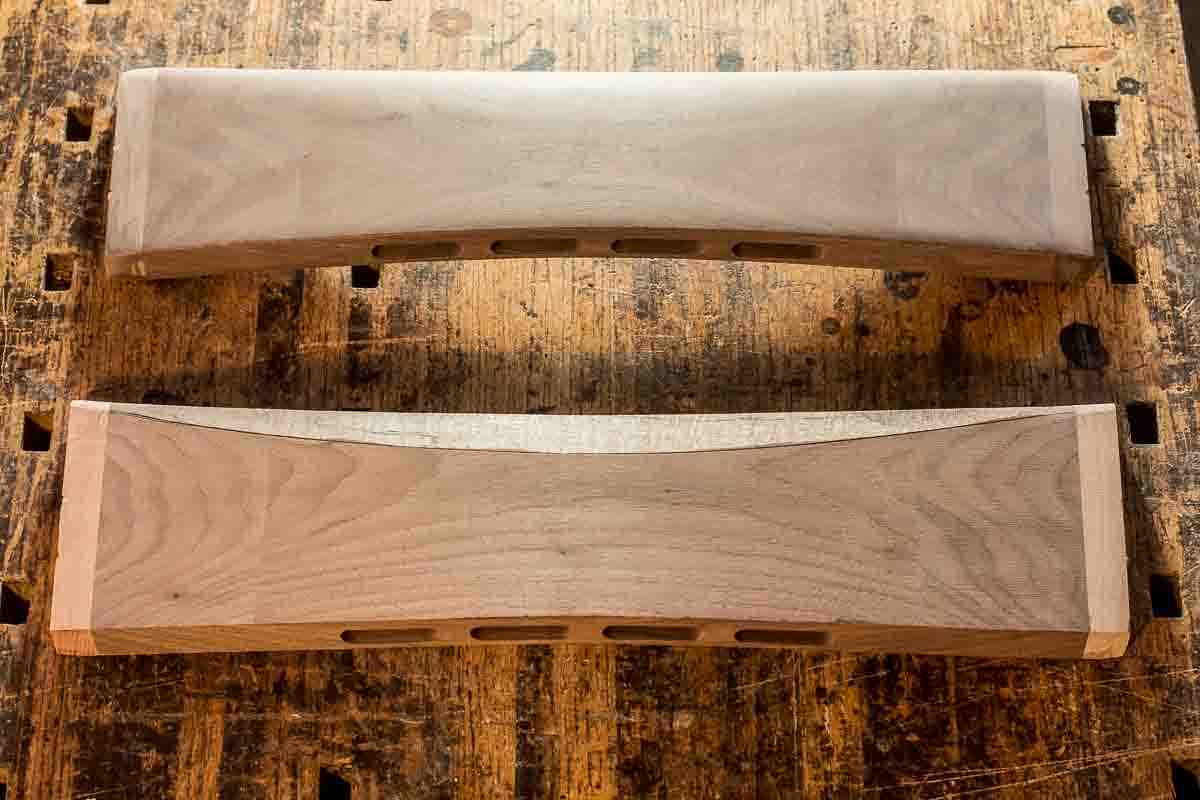Our Rocking Chair Crest Rails
We laminate the crests to achieve a deep, fit-your-back curve.
We select so that the hyperbolas displayed in them are profound.

The crests are the hardest parts to find in the stock.We look for them first and rarely find more crest rails in a quantity of wood than the number of chairs such a quantity will make. We select the crest rails so that the growth rings are parallel to a horizontal centerline. This means that we often don't work off the edge of the board.
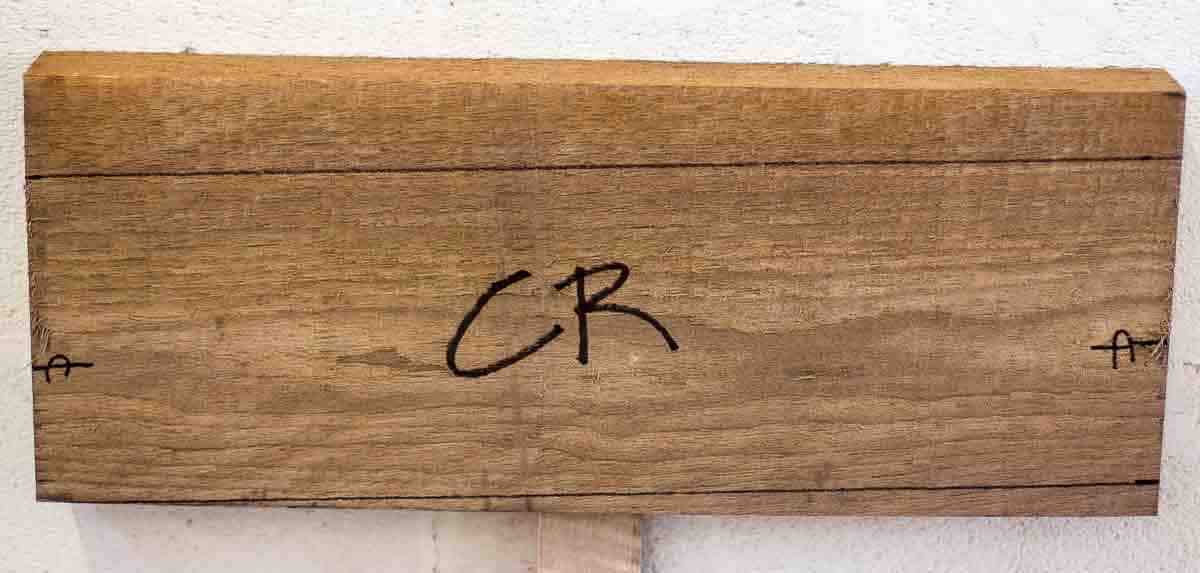
Like most chair parts, the crest is rough cut at the bandsaw.

If the growth rings are parallel to the surface of the crest rail blank and the heart faces out when we mark for the cut, lovely hyperbolas are revealed.
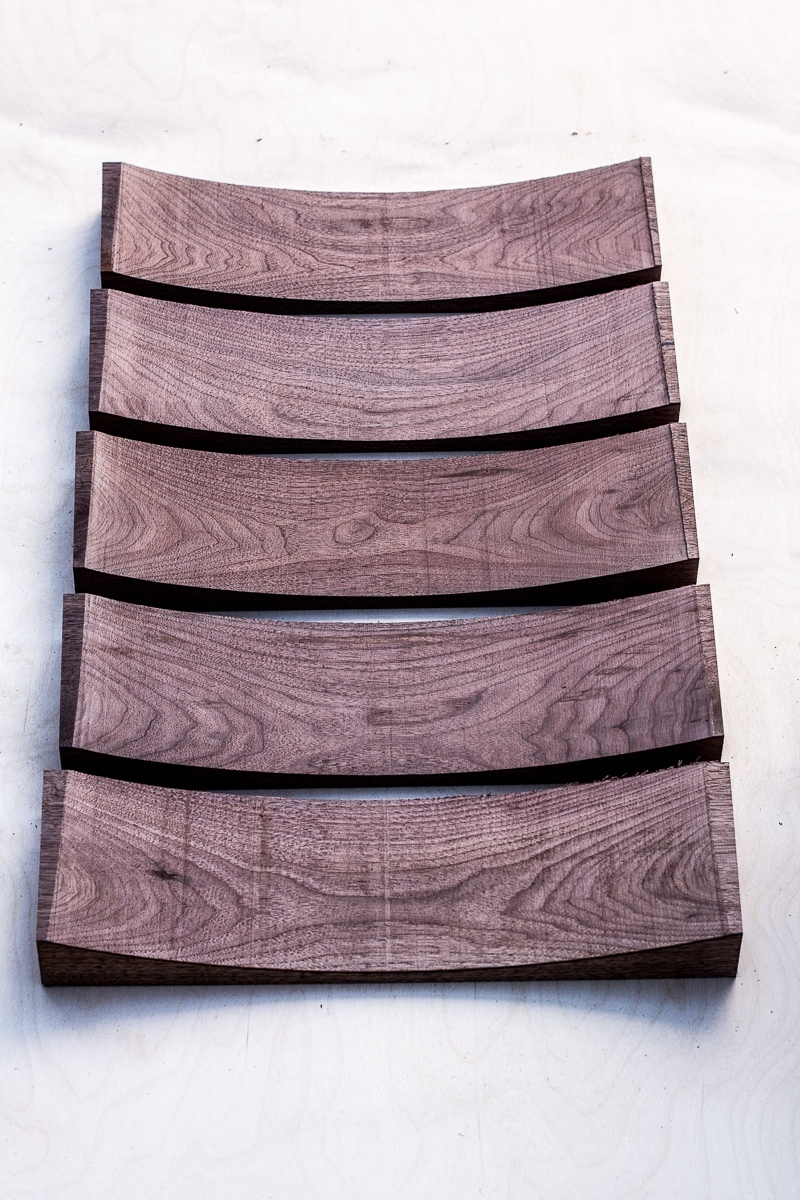
Mrs. Tisdale,
Thank you very much for those solid geometry lessons in conic sections.
With belated and too late respects,
Gary
We laminate the crest to obtain the necessary curve.
Most crest rails in chairs are too flat for comfort.
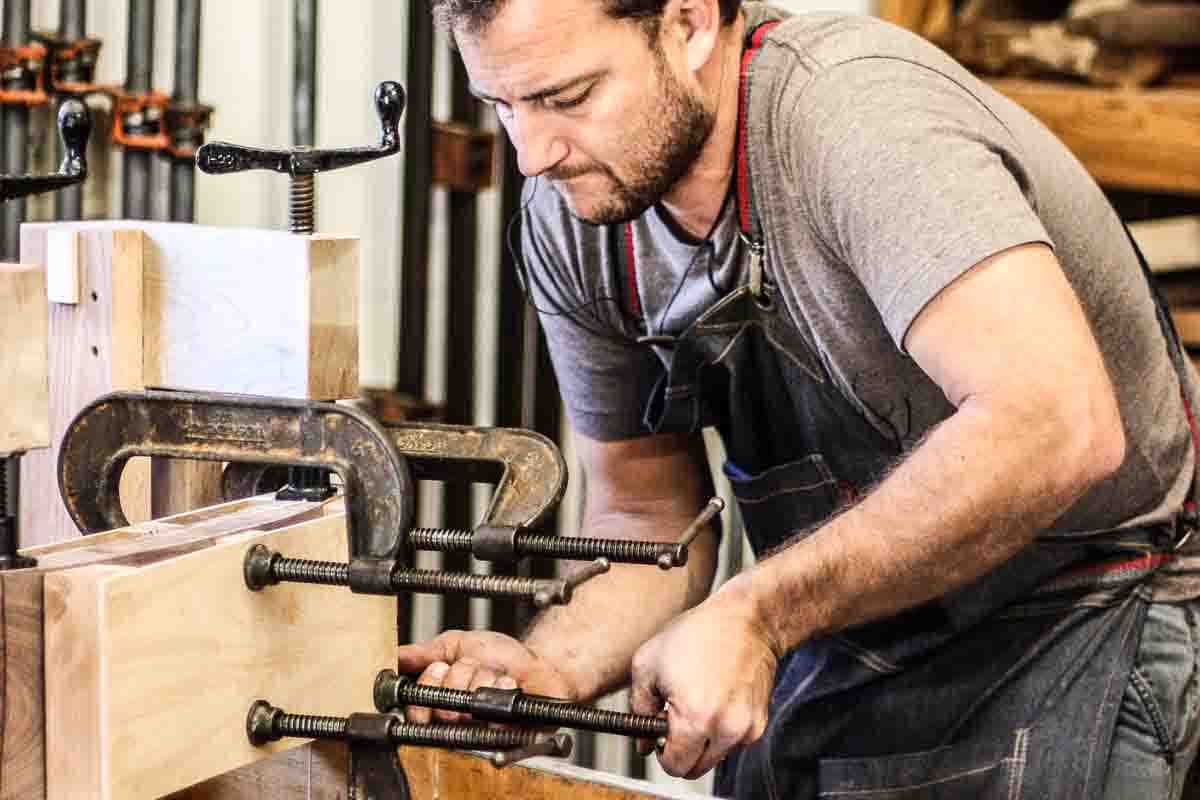
We have built many jigs, fixtures, and machines to facilitate the work on the crests. Some examples:

Aaron truing rocking chair crest
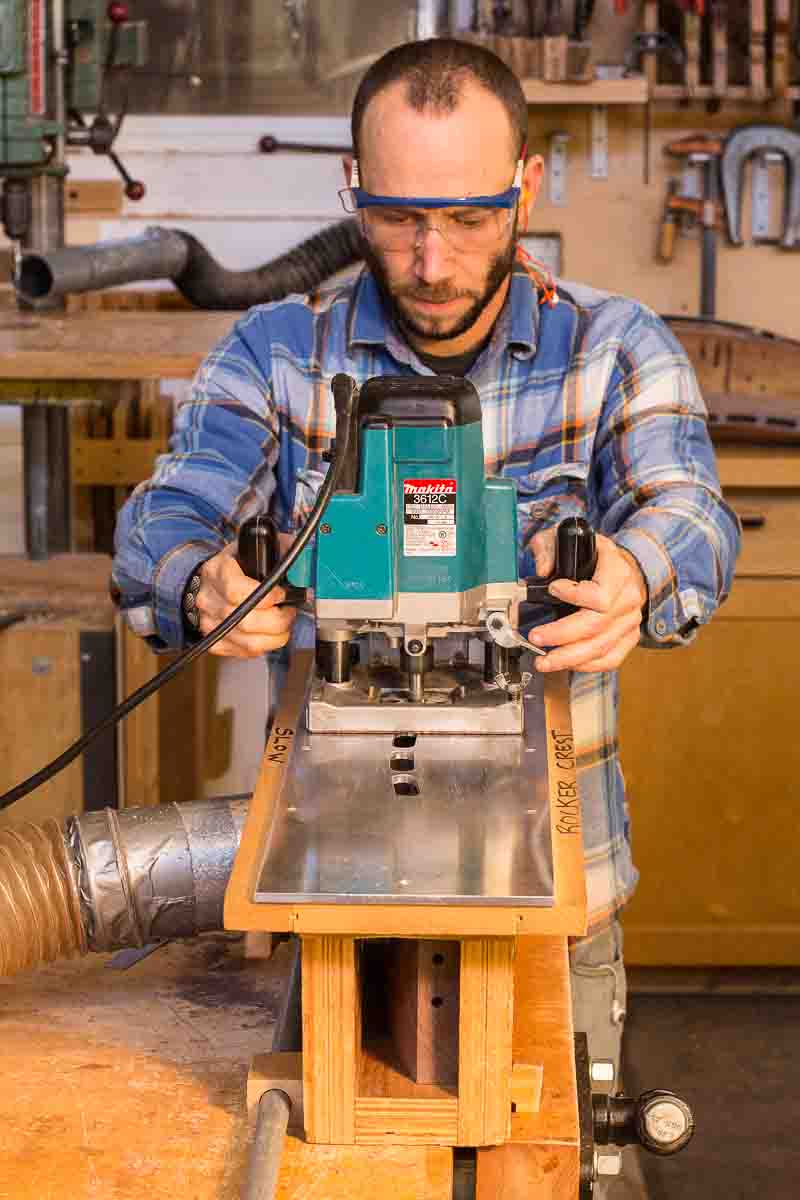
mortising rocking chair crest
These curved surfaces and mortises are precise.
The mortises lie along the curve equidistant from the edge (within a tolerance of .005").

0.069

0.072

0.069

0.069
We use a machine we built to sand the concave curves of the crest rail and other parts. I thought I had invented it, but later found out that such machines are common in areas where furniture has traditionally been manufactured. It's called, appropriately, a chair back sander.

The crest rail is further--much further--shaped, sculpted, and sanded.
Note the end protectors which allows us to freely work off the end of the crest, or drop it, without smudging the curve or damaging the joining surface. We remove the protectors just before assembly--leaving a crisp, true, clean edge and profile.
